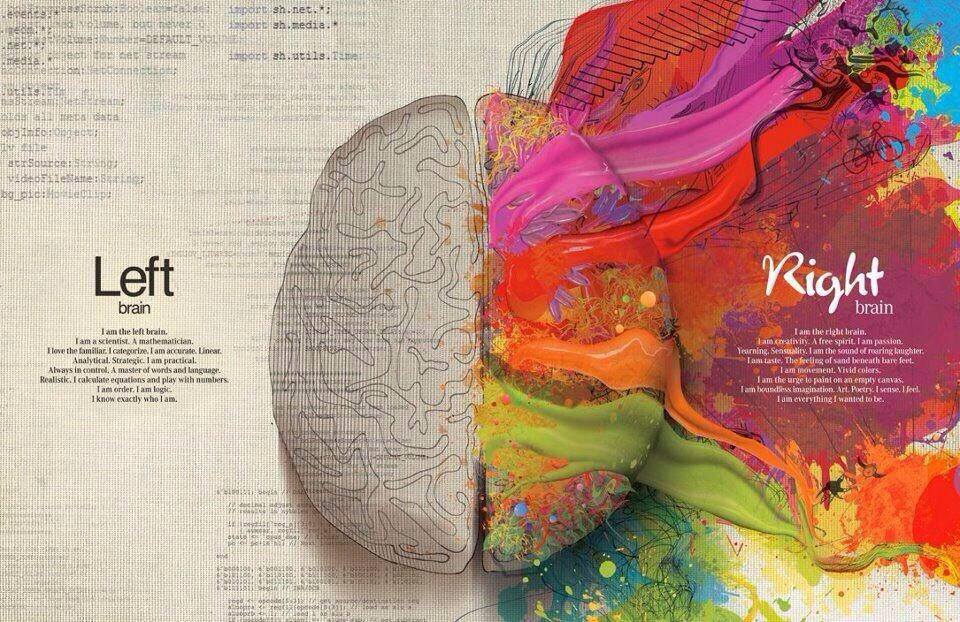Theories about learning styles abound, and can become confusing. However, the newest discoveries in brain research have made things simpler by looking at thinking and learning from the perspective of the different functions of the two hemispheres of the brain.
Neuroscientists have described the left hemisphere of the brain as auditory-sequential. Left-brain functions include language, reading, writing, science, mathematics, logic, analysis, and time-orientation. Left-brain thinkers and learners appear rational, objective and reality-based.
The right hemisphere is delineated as visual-sequential. Right-brain strengths include art, music, creativity, intuition/insight, spatial abilities, and wholistic thought. Right-brain thinkers and learners tend to be impulsive, risk-taking and fantasy-based.
Some children are mainly auditory-sequential in their thinking and learning; others are primarily visual-spatial; while several children excel in both methods.
Consequently, in school IQ tests, the students who are usually labeled as “highly gifted” excel at both the visual-spatial and auditory-sequential tasks.
On the other hand, students, who because of their overall performance, are characterized as “brighter” than their IQ scores, usually demonstrate marked auditory and sequential weaknesses.
The Gifted Development Center in Colorado has been researching the visual-spatial learner for over 30 years. In their validation studies, conducted in both urban and rural settings, one-third (33%) of the school population emerged as strongly visual-spatial. An additional 30% demonstrated a slight preference for visual-spatial learning. That totals nearly two-thirds of students exhibiting a visual-spatial preference.
Only 23% of students tested (less than one-quarter) were strongly auditory-sequential.
What does this suggest to you?
Doesn’t it follow that the majority of the students in our schools would learn better if instruction was given using visual-spatial methods?
Alas, most teachers continue to deliver instruction in the old “talk…talk…talk…talk” word-based lecture format and textbook-reading-question-and-answer method.
Does your child spend a vast amount of time completing puzzles, constructing masterpieces with LEGOs, completing mazes, identifying patterns in clouds and everything else, counting everything, noticing number patterns on your digital clocks, drumming on everything, playing chess, building with any handy materials, taking apart everything in your home to see how it works, or any similar activity?
In addition to the above, is s/he very creative, dramatic, artistic and musical.
In spite of all their abilities, is your child struggling to stay abreast or failing at school?


As a former high school educator, and now a time strategy visionary, I really enjoyed reading your post. I am very “left brained” and find I must focus on really adjusting my instruction for those that are more “right brained”. I tend to factor in processing modalities, attention span, and ADHD tendancies as I share strategies.
Like you, Lisa, I am “left-brained” but with a few “right-brained” traits. I like structure and sequence, too.
It’s always refreshing to meet someone who makes an effort to provide knowledge and instruction in a different way than that with which we are comfortable.
We need more voices advocating for those who learn differently. Some of our best brains are falling between the cracks, getting discouraged with the education system, and clocking out of living their best life.
Thanks for caring and sharing.
Very interesting and informative. I’m going to pay more attention to my nieces and nephews.
All hands on deck, Chantea.
You never know how many lives you may rescue just by “paying more attention” to how children learn.
Spread the news! Get more advocates for today’s children…tomorrow’s promise.
Thanks for your interest. I appreciate you.
I have three girls and they all learn differently. Although I had serious concerns about our school being the right fit for one of them, now that there are more hands on opportunities, as well as creative experimenting she is doing beautifully! Being aware of our children’s learning style is so important. In the right environment they will thrive but in the wrong school a brilliant child may get mediocre results.
That is so true, Valerie. Wise moms (and dads) study their children and facilitate their learning.
I became a voice for children who learn differently and my daughter’s advocate when I learned in grade 2 that she was dyslexic and her teacher wanted to retain her, but teach the same things in the same way the following year. That actually started me of the journey of my life.
Thanks for your input. I appreciate you.
Our kids are adopted from Russia 5 years ago and now 17 and 19 and have had to adjust to culture, language and rules, dare I say. We found the education system is based on the $ and that fitting as many kids under the standard process as possible. Great post, thanks for sharing.
You are welcome, Andy.
When you consider that publishers have more say in planning textbooks and curricular items than teachers, it is reasonable to say that money is the bottom line in the educational system. That may also be the reason for not making the changes that will make a significant impact on the children who learn differently from the current instructional format.
Are your children male or female? And have you helped them discover their thinking styles?